- News
- Reviews
- Bikes
- Components
- Bar tape & grips
- Bottom brackets
- Brake & gear cables
- Brake & STI levers
- Brake pads & spares
- Brakes
- Cassettes & freewheels
- Chains
- Chainsets & chainrings
- Derailleurs - front
- Derailleurs - rear
- Forks
- Gear levers & shifters
- Groupsets
- Handlebars & extensions
- Headsets
- Hubs
- Inner tubes
- Pedals
- Quick releases & skewers
- Saddles
- Seatposts
- Stems
- Wheels
- Tyres
- Tubeless valves
- Accessories
- Accessories - misc
- Computer mounts
- Bags
- Bar ends
- Bike bags & cases
- Bottle cages
- Bottles
- Cameras
- Car racks
- Child seats
- Computers
- Glasses
- GPS units
- Helmets
- Lights - front
- Lights - rear
- Lights - sets
- Locks
- Mirrors
- Mudguards
- Racks
- Pumps & CO2 inflators
- Puncture kits
- Reflectives
- Smart watches
- Stands and racks
- Trailers
- Clothing
- Health, fitness and nutrition
- Tools and workshop
- Miscellaneous
- Buyers Guides
- Features
- Forum
- Recommends
- Podcast
OPINION
Week At The Pyrenees – Because It’s Here
It doesn’t take too long on Tuesday morning for the bluff and bluster talk of attacking the two Hors Categorie climbs of the Port de Bales and Superbagneres to slowly fizzle in a puff of reality and for the second ascent to be substituted for the lesser Col du Portillon on the flimsy premise that it goes over into Spain, and it would be quite nice to go to Spain.
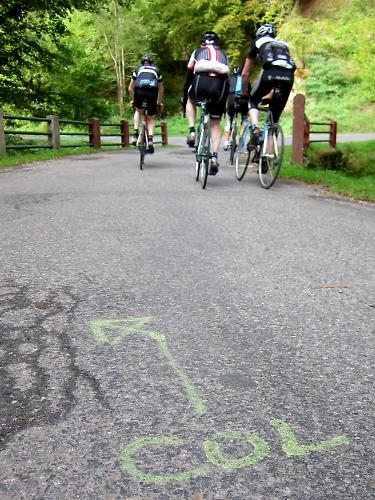
The Port de Bales is quite a recent addition to the Tour col palmares, only appearing in 2007. Rising incongruously from a narrow side street in Mauléon-Barousse it’s just under 19km long, topping out at 1,185 m with an average gradient of 6.3%, with steep ramps of over 11% to spice it up a bit. To put it bluntly it’s a bastard of a climb. A picturesque bastard though. It doesn’t help that the base of the climb is less than ten miles from Pyractif, so there’s not a lot of time for legs to wake up to the idea of suffering. A level of gravitas is added to the day when we find ourselves paused in the road a kilometre from the climb out of respect as there’s a funeral taking place, as we’re stopped one of the mourners comes to say thank you for waiting and to let us know that the person inside the casket was a keen cyclist. Oh.

The first section of the Bales after the short lurch out of town teases you into a false sense of security by gently undulating up alongside the river for about 8 kilometres, which is when you cross over a tiny bridge, veer left and the climb finally gets round to punching you in the thighs, and will continue to do so for the next ten kilometres or so, with big lumpy hammers. The initial section hauls itself up through thick forest with rock facing the road on the right and a stream burbling somewhere down on the left, opening out every so often into refreshing clearings that give you a welcome breeze. With a few kilometres to go the road turns right through a gateway of mountain onto green above the tree-line mountain and it levels off enough to breath easier. Here’s where you winch past the point were Andy Schleck dropped his chain, only a few years old and the climb already has history, smirk, and meander up to the summit. It’s something very pretty if you can see beyond the hurt and when you lie down in oxygen debt at the top you’re presented with a fantastic frieze of Pyrenean peaks to make it all the more worthwhile. Really. Until you realize you’ll probably have to go up one of them after lunch.

The descent of the Bales is amazing and you will forget the horror of the climb within a few hundred metres when you look to the left and see the tarmac plait enticingly down the side of the mountain. It can be split into three sections, all of them puckering fast. The top third is open and on un-barriered roads which adds a tongue-out concentration to your braking and leaning, even when there aren’t sheep asleep in the middle of the road just round the corner. The middle section from Bourg d' Oueil isn’t as steep and on more meandering roads that thread tightly through villages and weave between thick green fields, tread carefully as the villages hide tight corners. The last section steepens down again and spits you with absolutely no warning onto the Peyresourde road, about a quarter of the way up on the Luchon side, right on the hairpins. From there it’s a simple freefall into town for refueling.
An over exuberant lunch of steak, chips and beer probably isn’t the best preparation for a 10 kilometre Cat 1 climb, and I’m pretty certain not the contents of a Tour rider’s mussette, but still, we wobble off up the main street and turn left towards Spain on the Col du Portillon. The temperature has clicked up a midday notch just to make dragging full tummies up a climb that bit harder, and it makes the initial slopes before we hit the shade of the trees a bit of a reflux affair.
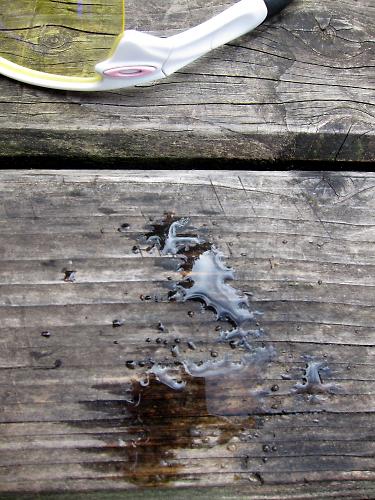
Something’s certainly hit me ugly in the legs, but I only had a salad, although it might be the pair of goat’s cheeses that came resting on top that are slouching sticky in the joints. I suspect however it might just be my age. I struggle with my weary body up the not especially excessive gradient. This hurts. I think I might be expecting to climb these mountains like I did a decade and more ago, or maybe my memory is flattering me, but I’m sure it was never like this. I have done better than this. On a standard chainset as well, not a compact. Much better. I can still fit in the same clothes as always and I’ve tried my best to keep a level of fitness but I’m just older, and it feels like my body is starting to let my expectations down. I don’t like it. I look at the tarmac and there’s a shadow sewn to the bottom of my tyres. The hop and skip and pounce I remember have been replaced with a steady sluggish diesel chug. I’m disappointed in my performance. I sweat. I sulk in myself. I almost throw all my teddies out the pram, and then my bike in the bushes. If I was ten years younger I might have done that. I grind on.
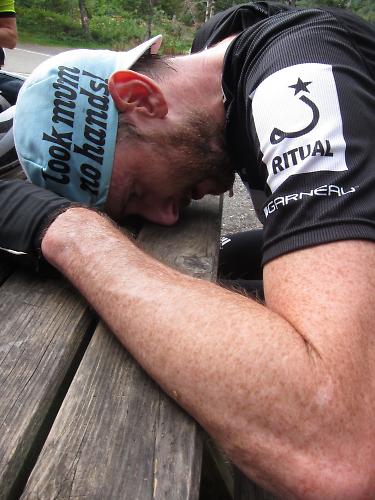
At the top of the hill, right on the border crossing, everyone is collapsed on a picnic bench, it’s been a muggy climb and there are men sweating lunch out, leaning on the table looking tired. I feel a little bit better that they’ve all found it an incredibly hard climb and it hasn’t just been me, even if from behind they did look like they were dancing on the pedals and I was churning squares. Self-esteem issues are slightly reduced for now. Phillip elucidates that there’s no point complaining about the harshness of the climb because we are all here because we have chosen to be, and we are doing exactly what we want to do. What we love. He is wise.
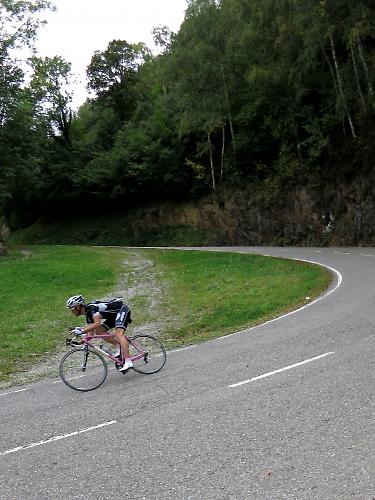
The descent into Spain isn’t particularly charming, the forest looks threadbare and scruffy, and they’re also maintaining the road so it’s a bumpy lumpy mess, with a wheel-snatching groove down the middle. But as a descent it has potential with new tarmac. Things don’t improve much as we hit the valley road and clatter through Bossost, the Spanish seem to have as many different types of tarmac as Eskimos do snow, most of it awful. This area was also subject to vicious flooding early in the year so we’ll cut them some slack this time, but it’s still a relief to get back into France where the surface instantly improves, even if the level of driving doesn’t and half of us almost die going through St Beat when a car pulls out into the middle of our eight-man chain-gang and by some sort of miracle, or impressive bike-handling skills, no-one gets hurt. Although there’s a lot of rubber and a spare life or two left on the road, and Will gets a puncture.

There are two more stupid driver near misses on the way home so it’s a relief to get back alive, where there is a home cooked meal waiting for us. Barring two dinners where the chef (Mrs Pyractif) gets a night off each evening there’s a fantastic three course meal of sufficient substance to satisfy a cyclist, and it’s not just piles of pasta and two types of sauce, it’s decent food; salmon, tartiflette, risotto, hefty salads. Proper pudding. No-one goes hungry. This is also reflected in a breakfast that is anything but Continental, with all the cereal you can jam down in preparation for a big day in the saddle, fruit, yoghurts and bread, jam and Nutella, coffee, tea and orange juice. Tonight after supper everyone goes straight to bed, a good hour before they did last night. Not that anyone’s tired, they’re just resting properly for tomorrow.
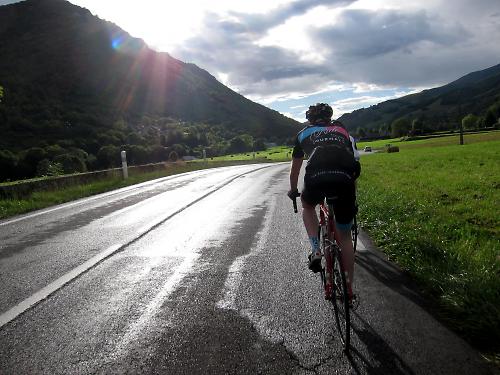
Tomorrow is the Tourmalet. The biggy. 17.2 km long, 2,115m tall, somewhere in a 110km day. Again the flimsy human influence on the mountain has been ravaged by nature and the road on the western side has been destroyed by flooding and is logistically awkward with ongoing repairs and such so we’re going to do the eastern side up and down and then climb the adjacent Aspin, and thus to home via the nice flat-ish way along the D26. We’re dropped off by van in the outskirts of Bagnères-de-Bigorre and using the Routes Des Cols approach road to the base of the Tourmalet as a warm up. It’s instantly obvious that it’s going to be a tough day, legs are tired, the sky is looking decidedly undecided and there’s a headwind rolling uphill start. When the road just to get to the climb is hard, then you know it’s going to be hard.
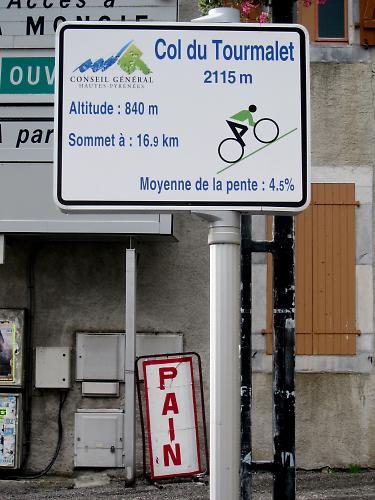
We pace through Sainte Marie de Campan, where early Tour rider Eugène Christophe famously had to mend the front forks on his bicycle during the race, you have to tell that story every time the village is mentioned, it’s contractual, and start the rise up the Tourmalet. The road dips and climbs, but mostly climbs, up the valley, through Gripp, and it’s not until the right-hand hairpin 9 kilometres from the official start that it’s considered the ascent begins in earnest, although your legs will definitely tell you different, and there’s another 8 to go.
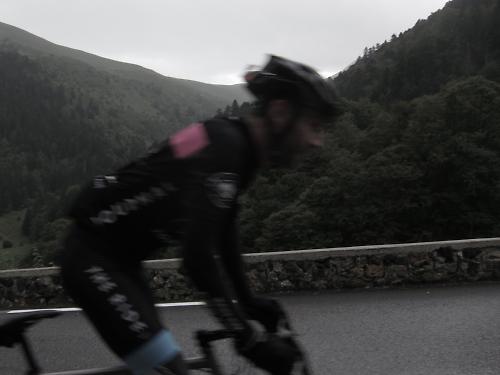
The weather has finally decided to make it’s presence felt before we’ve even got that far though, and rain is slashing in, if any of us where wearing that particular brand of clothing it would probably be Epic, but as we’re not it’s just a bit miserable. We lower our heads and just get on with it as it continues merely long enough to make us damp and the roads wet and scary for our descent later.
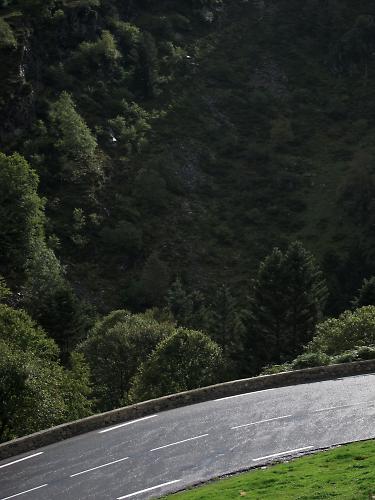
I think it helps that I have prior knowledge of this side of the Tourmalet having done it a few times before, only one of which I’ve cried, so I have a vague inkling of what to expect, and that is most of it is painful. I remember the long drag from Sainte Marie de Campan, the place where Eugène Christophe had to mend the forks on his bike, that takes you up the valley and that it quickly and encouragingly eats up climb kilometres, but I forgot that it steepened up so much before the hairpin, and that it took so long to get there. I must have blanked that bit. I remember the snow tunnels as I’ve stood under them sheltering from rain having a quiet moment of quivery lower lip contemplation, then you go past that bit that was like a refugee site of displaced and broken cyclists during the Etape I did. Although today it’s all about the Frenchman, I can tell he’s French by his well-worn 80’s Euro attire, nodding and huffing his way up the mountain. Some would say I suck his wheel for a bit but I’m merely looking in wonder at his incredibly old Carnac shoes and 2,000-wash grey white socks, not getting my breath back at all. Say “Bonjour – courage” and glacially creep ahead.
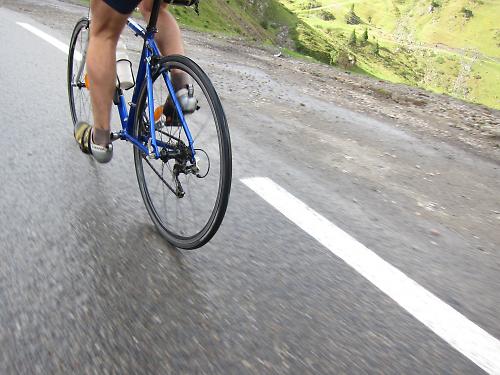
About now make a mental note the next time you’re screaming at the telly for your favourite rider to respond to an attack that it might not be that easy, because he might be finding it a bit tough. Just like you, but faster.
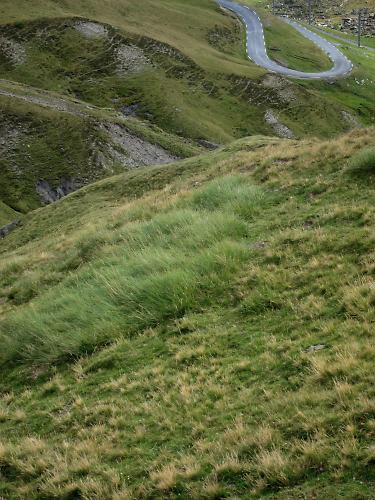
From there you head across that wide bit of tarmac with only the depressing sight of La Mongie ahead, grit your teeth for the steep section through the ugly concrete ski town whose only saving grace is to let you know that you’re nearly there, and once you’re past the donkeys by the side of the road there’s only three K to go, three wiggly, strip of tarmac through the endless green, past the dark walls of mountain, stretched to longer than they usually are kilometres to go.
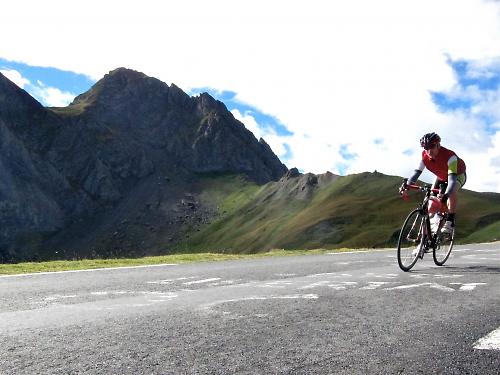
As we’re pedaling just out of season the café at the top is shut, which means I’ve still not been inside, so we take the obligatory summit pictures, even if the famous statue of the giant gasping for air on a bike has been removed for the winter and point our bikes back down the way we came. It’s a fast and nervous decent with wet patches on the road and stuttery tarmac in places, but landmark 50 mph top speeds are reached for some and the sun’s come out to make everything warm and happy again.
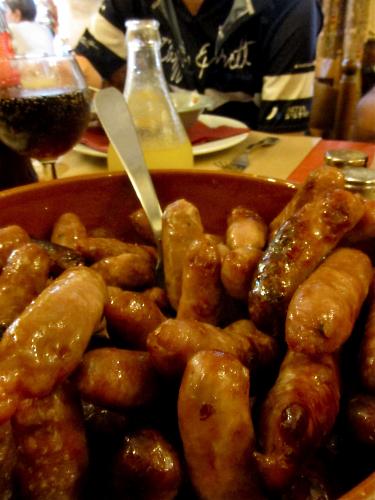
Back at the bottom in Sainte Marie de Campan, the place where that bloke had to weld his bike back together, we turn right onto the Col d’Aspin and start the desperate search for some food to get us over the hill. There’s a place a few kms in on the left that we pull into and before we know it we’ve ordered the 13 Euros three-course set lunch by mistake. We start with salad, cheeses and slices of cold meat, augmented by a large bowl of moreish miniature sausages that we’re not sure if we’re meant to eat the whole lot or not. This is followed by a main of pork and pasta, or steak and chips, both perfectly cooked, with cake to finish, and then coffees. It’s not exactly what was planned for in the way of snacks but we tackle it bravely and there’s an embarrassing nervous queue of lycra bibs for the toilet trying to loose a little weight before the climb.
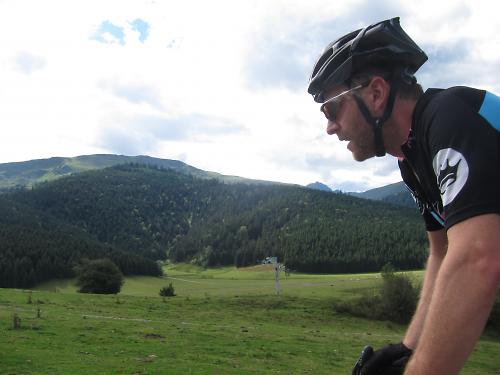
The Aspin is no monster climb from this side, it’s only the last 5kms of its 13km length that offer any gradient, although after a hefty meal with all of your blood in the stomach and not the legs it’s a reasonable effort. Even the ascent from the Arreau side, despite being roughly the same length is a steady yet steeper, if not especially so, gradient. It’s a heart-achingly pretty climb though, if limbs hurt too much just look up or sideways and they will be refreshed for the next few rotations, and the trees give up just shy of the top to allow a fantastic view of both the upcoming descent and the mountains to the east.

The descent rapidly flies up the smile chart for the week, with long straight sections between the hairpins and only the greasy kilometre towards the bottom as the road hides in the trees adding much concentration to the enjoyment, although it’s higher up the mountain that young Will gets a little bit carried away and crashes hard. Thankfully neither he nor his bike are actually broken, but he’s missing skin from his hand, forearm and there’s a large bit of flesh missing from his arse that’s about as big as the steaks we had for lunch. His mum’s not going to be pleased.
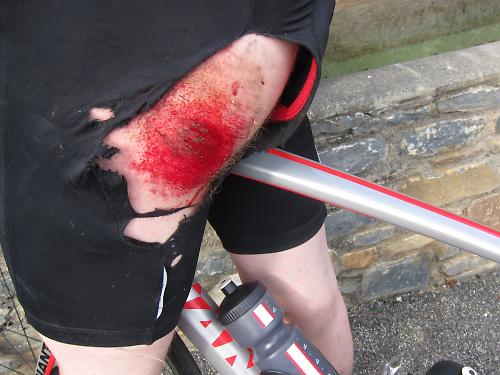
But he’s a brave soldier that doesn’t wimper much and he even instigates a two-man break that sticks all the way home, it doesn’t matter that the rest of the group were being too social to care, the “What would Hoogerland do” jibe might have had something to do with it. It’s a good “First Cycling Holiday In The Mountains” story to take home for Show And Tell though, and tell again.
Jo Burt has spent the majority of his life riding bikes, drawing bikes and writing about bikes. When he's not scribbling pictures for the whole gamut of cycling media he writes words about them for road.cc and when he's not doing either of those he's pedaling. Then in whatever spare minutes there are in between he's agonizing over getting his socks, cycling cap and bar-tape to coordinate just so. And is quietly disappointed that yours don't He rides and races road bikes a bit, cyclo-cross bikes a lot and mountainbikes a fair bit too. Would rather be up a mountain.
More Opinion
Latest Comments
- eburtthebike 4 hours 37 min ago
"......disgruntled residents continuing their protests by chaining bicycles the trees,..."...
- Secret_squirrel 4 hours 43 min ago
All competing for a role in a group that has been accused of being involved in massive corruption in the past. Hmm.
- Cycle Happy 5 hours 15 min ago
I've found the Chilli-Tech rear camera /light combo to be very good. ...
- quiff 5 hours 47 min ago
I was intrigued as to what, if any, connection the term has to Mongolia. According to, ahem, Wikipedia, Down himself (namesake of the syndrome)...
- Davisian 6 hours 26 min ago
I don't know why this is in the news, the Merseyside area is peppered with crossings that work like this and have done for decades. Maybe we don't...
- stonojnr 6 hours 36 min ago
at Man Utd its more about managing the bags of wind who used to play the game but now endlessly criticise from the comfy pundit sofa, than anyone...
- wtjs 7 hours 40 min ago
The cyclist told road.cc that he has not reported the near miss to the City of London Police because “what’s the point? They’re not interested...
- chrisonabike 7 hours 58 min ago
Never mind all that now - do people have any opinion on pet-cycling-safety?...
- chrisonabike 8 hours 57 min ago
That's clearly far too large a vehicle to transport pets in urban areas. What about a Ram (perhaps more suited to country types though)?
- Tom_r_k 9 hours 4 min ago
Brilliant to see a company showing some love to rim brakes. I have been tempted to get some soon so may support a company offering fresh updates...













































Add new comment
3 comments
Lovely write up Jo. Did Tourmalet in the fog as part of last year's TdF stage 16 (loved it) and then did Port de Bales the next day as part of stage 17 in the blazing sun and hated it (ABSOLUTELY hated it), was a serious brute of a climb. Would love to get out there and try some of 2014's route...and a revisit to the Tourmalet to try and get a view!
Ah! Memories of my summer. The Aspin is indeed a nice little climb and very beautiful. I take it that you were not swarmed by the horse flies up there.
That's one reason never to get off your bike and stop. Ever. Anywhere on the mountain.
I need to get back up the Tourmalet. First time I went there was snow blocking my route to the summit (in May!) and second flash floods had removed the road. One day......
Superb! As one who's had two failed attempts to join Pyractif (perhaps not wise to mention or blame my wife's collapsed and then replaced knee as the cause), you've encouraged me to get off my * and onto my bike, as the kiwi summer sputters into life. Thank you.